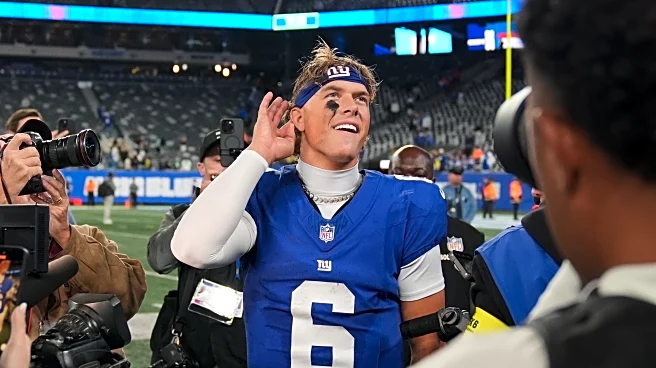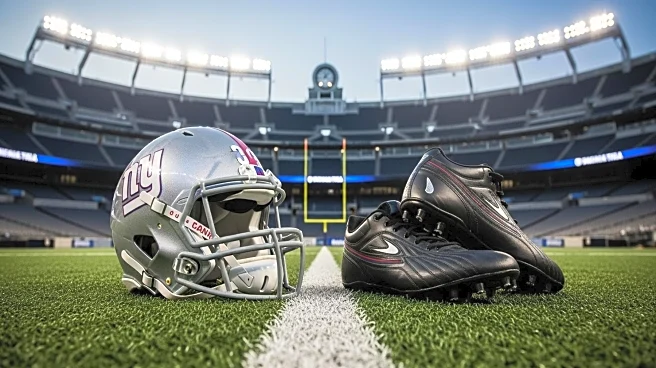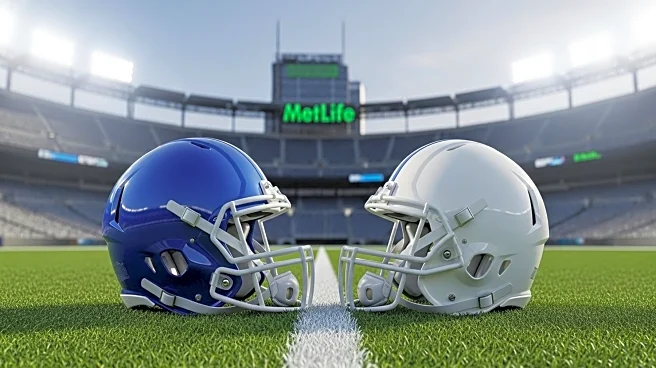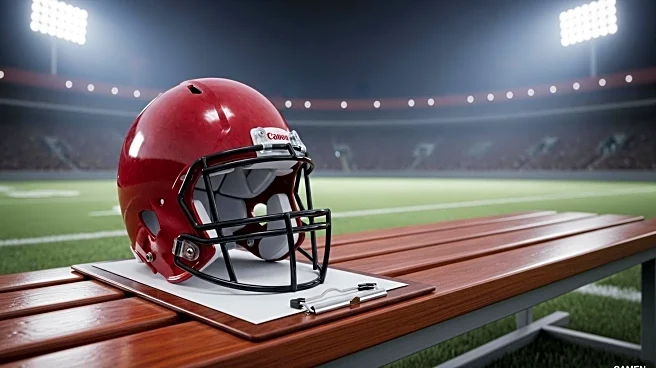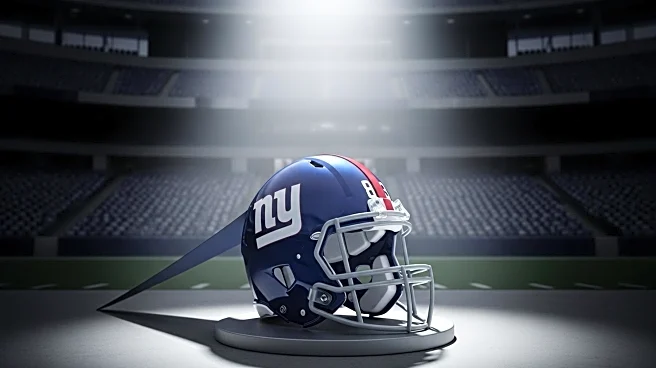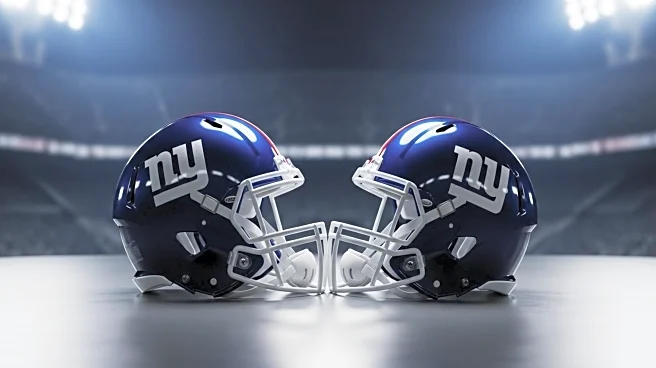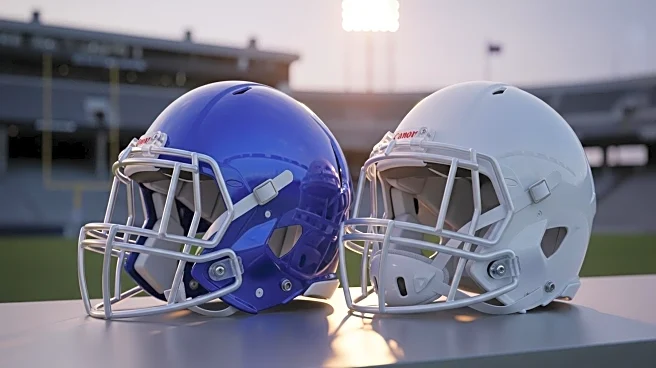What's Happening?
The NFL has launched a review of the concussion protocol applied to New York Giants rookie quarterback Jaxson Dart during a game against the Philadelphia Eagles. The review, conducted jointly with the NFL Players Association, follows an incident where Giants coach Brian Daboll was seen checking on Dart in the injury tent after he sustained a hit. Daboll expressed impatience over the time taken for Dart's evaluation, which led to an apology to the team physician. The league's chief medical officer emphasized strict rules regarding who can be present during concussion evaluations, highlighting the importance of player safety.
Why It's Important?
This review underscores the NFL's commitment to player safety and the integrity of concussion protocols. The incident highlights ongoing concerns about the pressure to return players to the field quickly, potentially compromising their health. The outcome of this review could influence future policies and practices regarding concussion management in the league, affecting how teams handle similar situations. It also reflects the broader scrutiny of sports organizations in ensuring athlete welfare, which is critical for maintaining public trust and the league's reputation.
What's Next?
The NFL and NFL Players Association will continue their investigation into the incident, which may lead to adjustments in concussion protocol enforcement. The Giants organization, including owner John Mara, who is part of the NFL's Competition Committee, may face increased scrutiny regarding their adherence to health and safety standards. The findings could prompt discussions among teams and medical staff about improving communication and procedures during injury evaluations.
Beyond the Headlines
This situation raises ethical questions about the balance between competitive pressures and player health. It may lead to a cultural shift within the league, prioritizing long-term player welfare over immediate game outcomes. The incident could also spark dialogue about the role of coaches in medical decisions and the need for clear boundaries to protect athletes.


